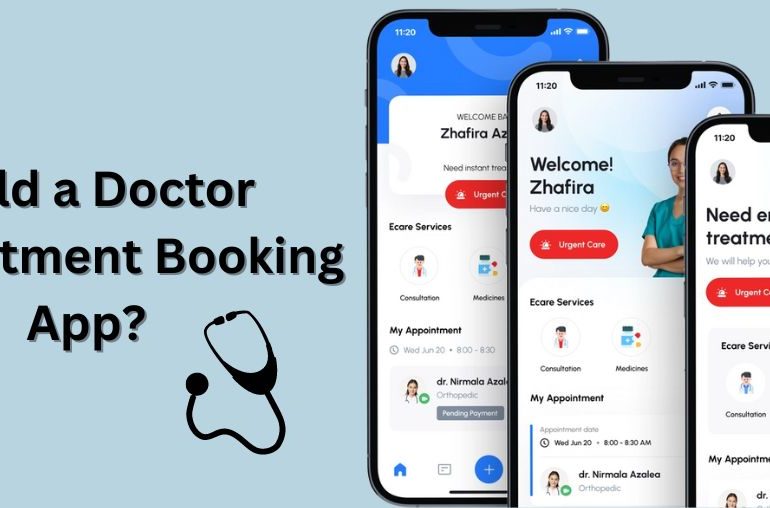Last Updated on January 21, 2022
What Is Mobile App Testing?
Mobile Application Testing is a method by which applications intended for cell phones are analyzed for their usefulness, convenience, execution, similarity, and substantially more. Mobile application testing can be mechanized or manual. It helps you guarantee that the application you’re presenting to users satisfies all market demands and user expectations. For a better understanding take a look at our guide to mobile app testing.
Why Is App Testing Important?
Mobile developers can’t risk errors in their applications to stand out in the competition in today’s time. One problem, be it glitches, crashes, delayed loading time, weak navigation, or protection gaps in an app, most customers will reject it.
Developers need to design user-friendly and compatible applications for them to run in the market. Mobile app testing guarantees that the mobile activity is influential, without the concern of what sort of app is being used or what platform it is designed for.
- It ensures the proper functioning of applications. Real devices are used to test if programs can be appropriately downloaded by users or not and if it communicates with the support as expected.
- By testing, the developers can see through the point of view of the users. They start working on an application to recognize whether its navigation is relevant and spontaneous and whether it is acceptable to use it in different positions.
- It rewards you with increased customer loyalty as any application that satisfies and runs well in the market ends up making a deserving reputation, and more and more users start using the application.
- This process also saves you from fixing problems and redeveloping an app at the last step, which saves time and lessens the total expense, and promotes a swift time-to-market. This results in higher revenue.
Types of Mobile App Testing
Learn about types of app testing is crucial to building a great app with no bugs.
Cross-Platform App Testing: Apps that have to communicate with different apps need extra fixes. The best cross-platform testing approach includes – Assembling and understanding design specifications; Discussing market aims; Knowing various language platforms, Following user demands.
Front-End App Testing: Front-end testing includes examining the Graphical User Interface or GUI. GUI is everything that is evident on the client-side. This trial demands absolute knowledge of the business aims. Important features of front-end testing cover: Functionality analyses; Regression analyses; Modifications to app files that may unfavorably change front-end performance.
Back-End App Testing: It is also known as database testing. The mobile app testing assistance will monitor the server end of the app. All front-side information is tested in the back-end. Execution and protection are also analyzed in this test process.
Functionality Testing: Applications interact with various features, including features developed into the app and the mobiles. Feature functionality testing by mobile app testing services involves monitoring and completely examining these communications. All devices don’t need to run functional testing. Solely it may demand driving tests on an individual device and then reviewing with each platform throughout compatibility trial.
Storage Testing: Current cell phones appear to be deficient away space for all the diverse applications and information, including games, pictures, recordings, web-based music features. The mobile application testing administrations will likewise test your application on how much extra space it will require and what it can mean for clients’ monthly data plans.
App Flow Testing: A very much planned application will have exquisite visual components and great usefulness, provisions, and content. Visual stream assumes a significant part in directing clients through the application. This part of mobile application testing sets will include testing the progression of the application’s structure. Components are recognized that can influence clients from wrapping up the ideal responsibilities.
Data Tests: App loading speed and time is a vital constituent influencing user experience. It is known that most of the customers will reject using the application or uninstall it if the loading speed is slow. These inspections will include the following factors when analyzing the app for load times: Network requirements; Geographic area, Particular devices.
Step by Step Mobile App Testing Checklist
- Functional Testing
- Accessibility Testing
- User Experience Testing
- Security Testing
- Performance Testing
- Compatibility Testing
Functional Testing Checklist
Functional testing is the primary testing activity that assures that all the features of the app are working as it is supposed to. It checks whether the application meets its goal or not. The aspects which are tested are:
- Review for both assigned and non-designated tasks.
- Sending and receiving texts while the app is running.
- Rejecting calls while the app is running.
- Reopening the app after an intrusion.
- Compatibility with the desktop version of the application
- The app’s effect on the device’s battery.
- Sufficient restriction from making unnecessary actions.
- Space used by the app.
- Error issues with the layout/User Interface.
- Functionalities like camera, screen resolution, and other such parts might differ depending on the kind or level of the mobile app.
Accessibility Testing Checklist
Breaking accessibility laws could end in huge penalties. This makes the app accessible to all users. Testing apps from an accessibility point of view executes the app even more potent as it directs much broader user support (including users with specific limitations. The aspects which are tested are:
- Text color contrast and screen magnification.
- Readability of the app.
- User Interface authority for uniform structure.
- Voiceover or Talkback characteristics of the app
- Guarantee navigation is structured, compatible, detailed, and relevant
- Screen reader adaptability and changing font size.
User Experience Testing Checklist
User Experience testing, or UX testing, estimates how user-friendly and spontaneous the app is. User Experience testing can expose issues in the mobile UX design which affect the experience from the user’s end. The mobile app testing assistance will have to examine the user interface (UI) to intensify the application’s appearance and quality. The aspects which are tested are:
- Analyzing the application when adjusting the screen bearings.
- Receptivity of the drop-down menus
- Simplicity and efficiency of readability of application keys
- The comfort of distinguishing between live and inactive pins
- Immediate presentation of warnings and failure texts.
- Responsiveness of the application title and logo when the Application Manager is ticked
- Getting a visual display for the user actions in the app in just three seconds’ summits.
- The performance of exit selections at any time when the app is working
- Put aside the unmapped keys
- Allowing profoundly active Mobile list for Mobiles and Tablets.
- Effortless navigation over multiple screens.
Security Testing Checklist
Clients need to realize that their digital encounters are secure, and that is the place where security testing comes in. Security testing guarantees that delicate data and information stays safe. This section of the testing method supports ensuring that the app is set for verified usage. The aspects which are tested are:
- Fingerprint and face identity.
- Decent storage of application data and individual data.
- Conventional encryption of data saved locally on the device.
- Customers’ Payment information safety
- Web etiquettes protection for using apps
- A rupture in applications’ safety and failure reporting
- Validating app documents and agreements
- Automated Application lockout upon continuously accessing indefensible
Performance Testing Checklist
Performance Testing is a vital part of a complete testing methodology for portable applications. This sort of testing measures the responsiveness, speed, and adaptability of your application under various conditions. Mobile application performance testing allows you to test the application’s presentation by emulating an expansion in the number of simultaneous meetings and exchanges to the application. This guarantees that there is no debasement in the application’s presentation in any event when there is a weighty burden on the application. The aspects which are tested are:
- Time exercised to begin the app
- Application review at times of top load circumstances and frequent keypad entry
- Splash performance analysis and assuring it continues on screen for not more than 3-4 seconds
- Application review in below level mobile battery and charging requirements
- Alliance with the device and different apps without hindering performance.
- App installs/uninstall strongly in the wanted time.
- Presenting failure texts and quits smoothly when there is a low memory problem
- Application performance when there is a Network problem, and error warning comes up
- Application performance when the Network returns again after a problem.
Compatibility Testing Checklist
Compatibility testing guarantees that your versatile application works across various gadgets, OSes, and ages. Given the divided idea of the versatile scene, focus on testing against the most famous cell phones and OSes in your locale. It assists in discussing the problems that occur due to mobile device fragmentation and mobile OS fragmentation. The aspects which are tested are:
- Device-specific characteristics abilities
- Mobile’s viewports
- Screen resolutions and Screen size.
- OS-distinct features.
- Advances in the User Interface.
Factors Considered While Testing Mobile Apps
Key factors that are considered while testing mobile applications:
- Cell phone Selection: The gadget testing approach requires the choice of gadgets that are generally appropriate for testing. This choice depends on the utilization examples and inclinations of the designated client bunch.
- Real Devices vs. Simulators: Devices are utilized for leading daunting tests on applications. Test systems or Simulators are utilized to establish a genuine climate for testing.
- Performance: Automated testing is utilized to actually look at the application’s presentation. This can likewise incorporate the utilization of burden/stress for testing application conduct.
- Cloud Testing: An expanding number of mobile application testing administrations use cloud testing. This aids in cutting down the expense of testing, yet additionally works with quicker reach to the market.
- Network: Apps are tested under changing interface conditions. This aids in making applications utilitarian across the most troublesome organizational situations.
Top Tools Used For Testing Mobile Apps
Appium
Appium is the best framework that can be used for mobile app testing mechanization. It operates on both Android and iOS applications. Mobile native, web, and heterogeneous applications can be tested with Appium.
Espresso
Espresso is a self-regulation framework for Android apps. Espresso testing concentrates on Android-specific User interfaces, and the framework is considered to be very developer-friendly. The framework is installed into the Android IDE, and it’s simple to get begun with.
XCUITest
XCUITest is a mobile test mechanization framework only for iOS. As it is specifically for iOS, XCUITest is entirely detailed and managed by Apple. The framework is secured into the XCode IDE, which additionally makes scripting quick.
Quantum
Quantum is a BDD (Behavior-driven development) testing framework. It can be utilized for mobile as well as web examining. It is not needed to understand code to write analysis scripts with Quantum. Automated tests can be created in plain language.
Conclusion
Mobile application testing is a method for ensuring that the mobile variant of a site or application works appropriately and produces a similar client experience like that on work area and PC adaptations. This sort of testing helps find and fix bugs, further develop proficiency, coordinate with the inward application, and guarantee consistency with portable particulars. This blog shows how you can guarantee a sans bug application by following the portable application testing agenda.
Nonetheless, making applications 99.9% sans bug is perhaps the greatest test that associations confront these days.
Emizentech is an app development company that is adept at creating robust apps for various industry verticals. If you need professional assistance do let us know.





 USA
USA UK
UK Singapore
Singapore